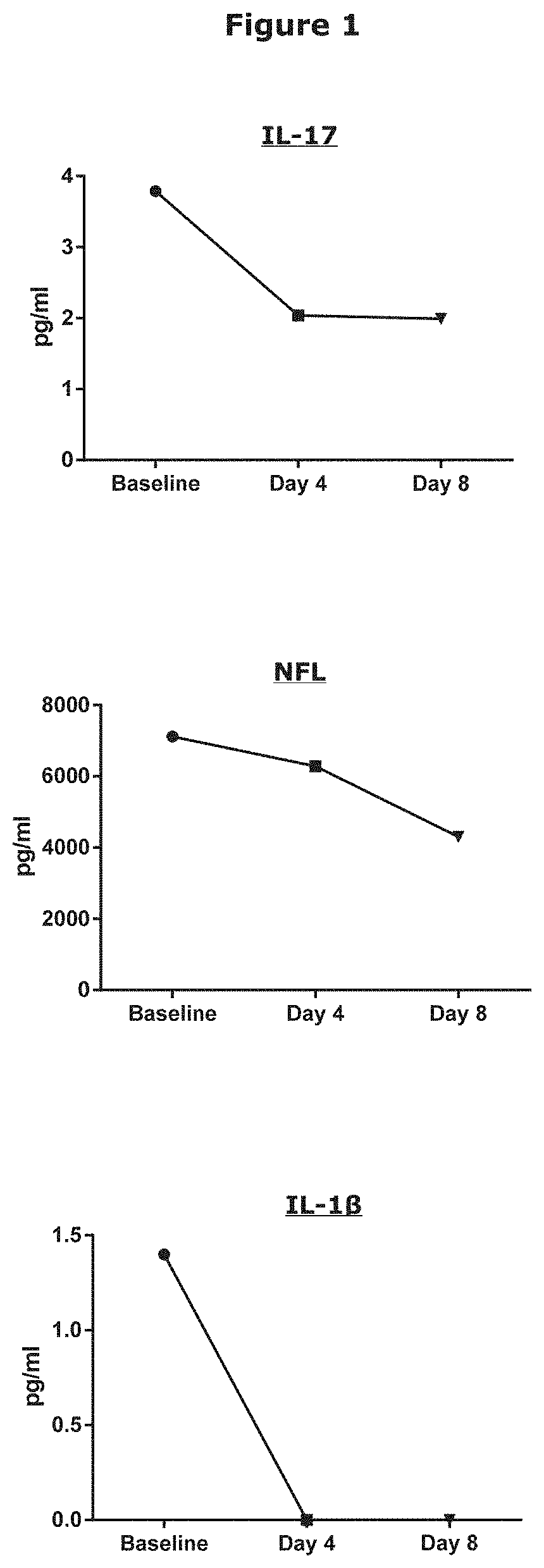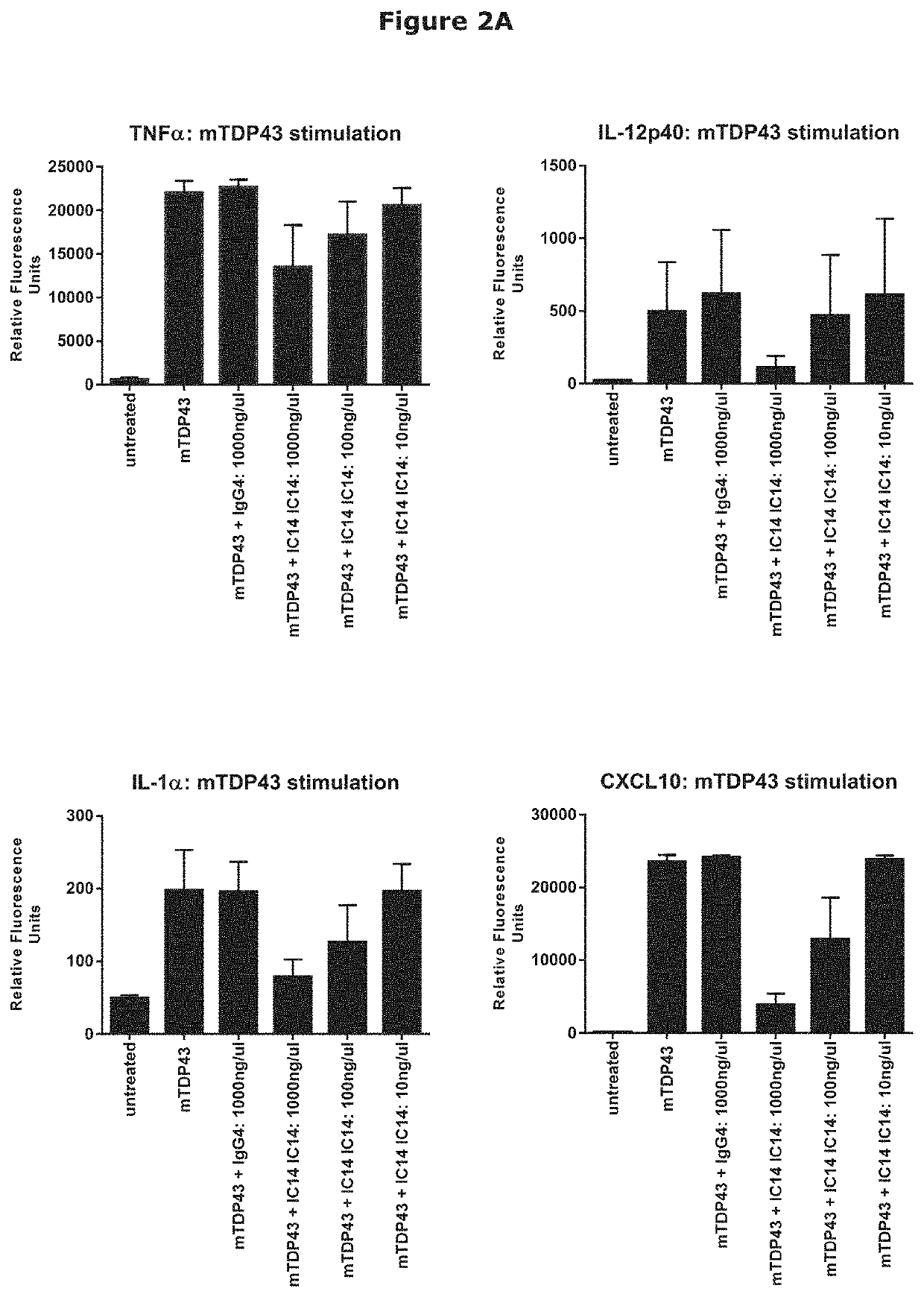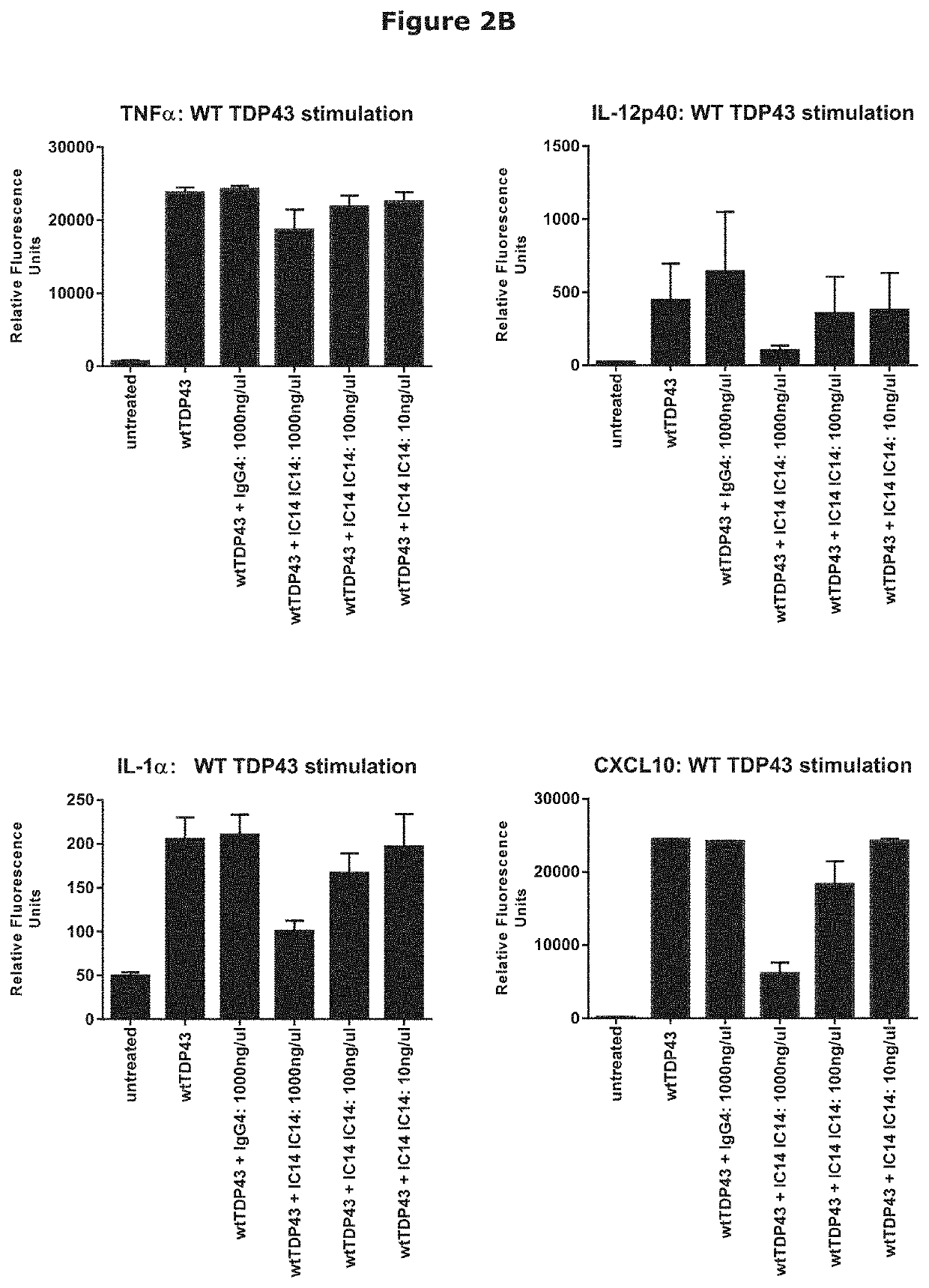Cd14 antagonist antibodies for treating neurodegenerative diseases
a neurodegenerative disease and anti-cd14 technology, applied in the field of cd14 antagonist antibodies for treating neurodegenerative diseases, can solve the problems of neurodegeneration death, adverse impact on the quality of life, early death, etc., and achieve the effects of attenuating disease progression, and reducing the risk of neurodegeneration
- Summary
- Abstract
- Description
- Claims
- Application Information
AI Technical Summary
Benefits of technology
Problems solved by technology
Method used
Image
Examples
example 1
Treatment and Prophylaxis of Patients with MND by Systemically Administering Monoclonal Antibody IC14
Experimental Design
[0166]patients with familial or sporadic MND (defined as clinically possible, probable, or definite by Awaji-Shima Consensus Recommendations), who exhibited their first symptoms of MND within 3 years of informed consent and who are aged between 18 and 75 years, will be recruited.
Dosage Regimen
[0167]Patients will be assigned to receive one of two dose regimens of IC14 in an unblinded manner: all doses will be delivered IV as an infusion over a 2-hour period:[0168]For the initial 3 patients: IC14 at a dosage of 2 mg / kg on Study Day 1, then 1 mg / kg once daily on Study Days 3-5 for 4 total doses.[0169]For the subsequent 7 patients: IC14 at a dosage of 4 mg / kg on Study Day 1, then 2 mg / kg once daily on Study Days 2-4 for 4 total doses.
[0170]Study participation will continue until 28 days after the last dose of study drug.
[0171]Sterile glass vial containing I...
example 2
IC14 Inhibition of TDP-43-Driven Activation of Primary Human Microglial Cells
[0192]Immune responses in the brain and spinal cord are primarily mediated by microglia which act as a first line of defense and play a key role in initiating and sustaining neuro-inflammatory responses driving neurodegenerative diseases, including ALS (Salter & Stevens (2017) Nat. Med. 23, 1018-1027).
[0193]SOD1 and TDP-43 are intracellular proteins that have been implicated in ALS. In vitro systems using mouse microglia have demonstrated that both proteins are able to act as Damage-Associated Molecular Patterns (DAMPS), activating microglial cells, inducing pro-inflammatory cytokines and promoting neurotoxicity. These responses utilize TLR and NLRP3 signaling, with DAMP-driven activation is inhibited by blocking antibodies to TLR2, TLR4 or CD14 (Zhao et al. (2010) Glia 58, 231-243; and Zhao et al. (2015) Exp. Neurol. 273, 24-35), pointing to a role for the blockade of CD14 in the inhibition of neuroinflamm...
PUM
| Property | Measurement | Unit |
|---|---|---|
| time | aaaaa | aaaaa |
| Tm | aaaaa | aaaaa |
| pH | aaaaa | aaaaa |
Abstract
Description
Claims
Application Information
 Login to View More
Login to View More - R&D
- Intellectual Property
- Life Sciences
- Materials
- Tech Scout
- Unparalleled Data Quality
- Higher Quality Content
- 60% Fewer Hallucinations
Browse by: Latest US Patents, China's latest patents, Technical Efficacy Thesaurus, Application Domain, Technology Topic, Popular Technical Reports.
© 2025 PatSnap. All rights reserved.Legal|Privacy policy|Modern Slavery Act Transparency Statement|Sitemap|About US| Contact US: help@patsnap.com



